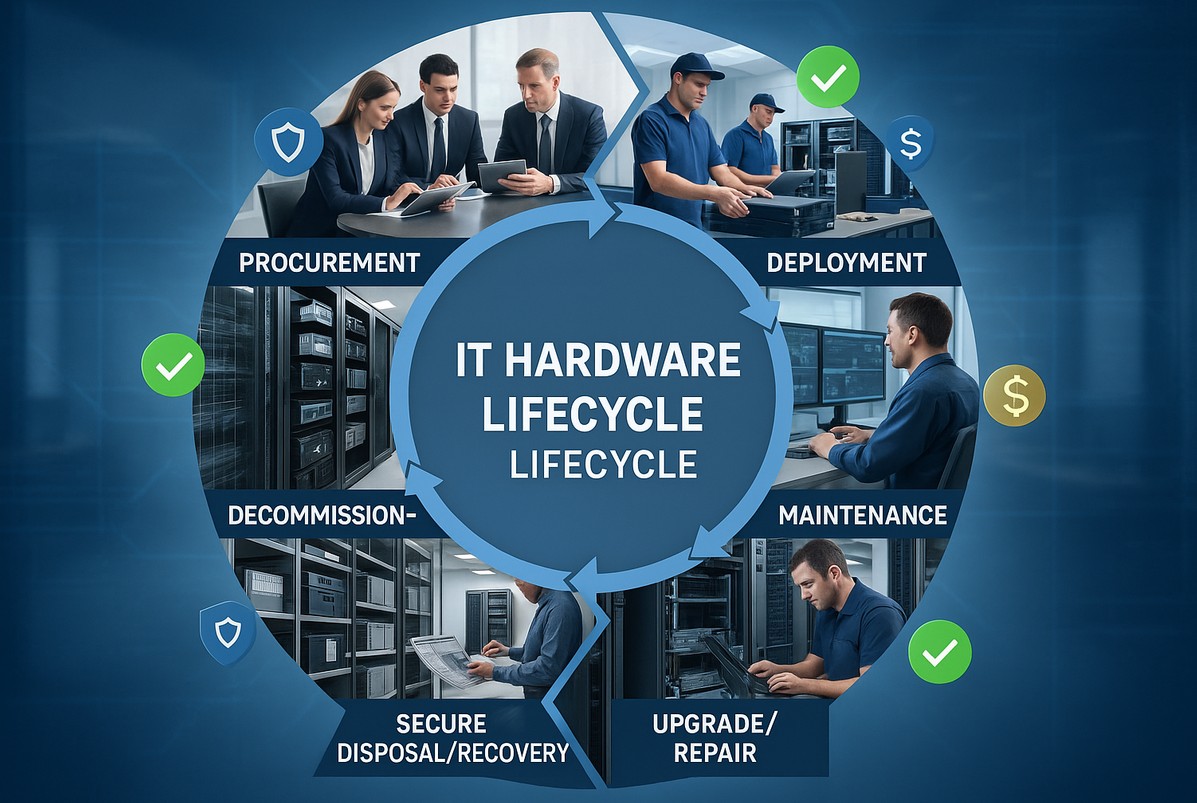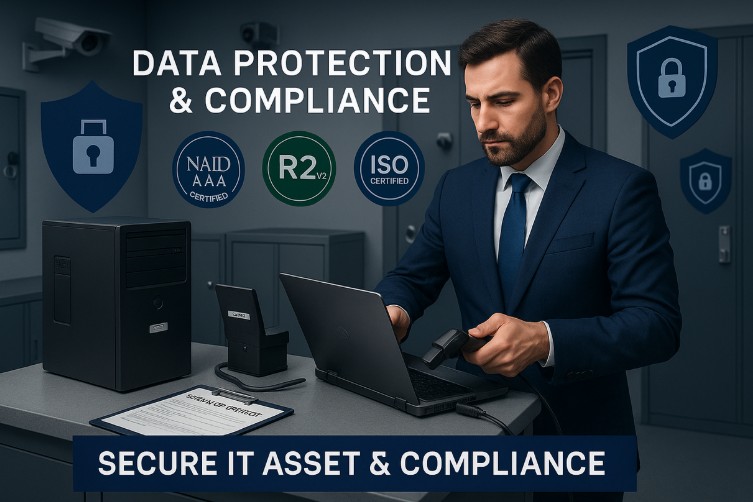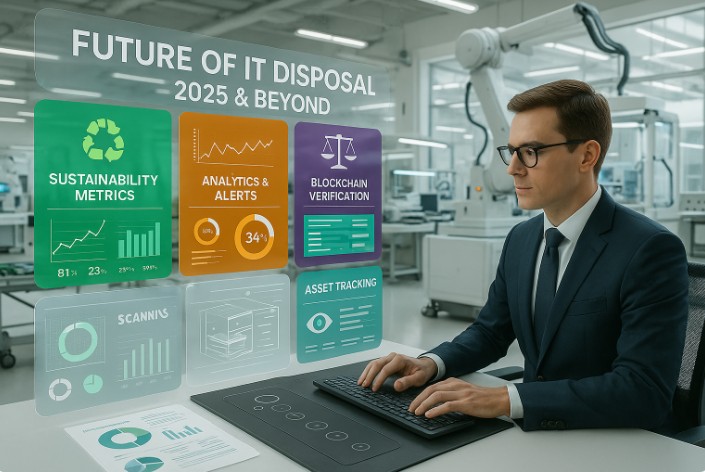The enterprise IT hardware lifecycle is more than just a linear path of procurement and decommissioning. It’s a dynamic, continuous process that requires careful planning, execution, and review. When optimized, effective lifecycle management improves operational efficiency, reduces total cost of ownership (TCO), enhances data security, and supports regulatory compliance.
In an era shaped by digital transformation, cloud computing, and hybrid IT environments, strategic hardware lifecycle management (HLM) has become a strategic imperative. This guide breaks down each phase of the lifecycle, providing actionable strategies for IT leaders to overcome challenges, streamline operations, and maximize infrastructure performance.
Understanding the Enterprise IT Hardware Lifecycle
Lifecycle management refers to the strategic administration of IT assets from acquisition and deployment to maintenance and end-of-life disposition. Full visibility into each asset’s journey is essential for maintaining performance and avoiding unanticipated costs.
Why IT hardware lifecycle management matters:
- Improves consistency and reliability across infrastructure
- Reduces risks from outdated, unsupported, or incompatible systems
- Supports proactive planning and IT budgeting
- Aligns with environmental and regulatory compliance goals
Organizations that adopt a lifecycle-first mindset are more agile, better equipped to mitigate risk, and more effective in aligning technology with business outcomes.
Key Stages of the IT Hardware Lifecycle
Each phase in the hardware lifecycle can either contribute to operational success or introduce inefficiencies, depending on how well it’s managed. Understanding and optimizing these stages is the foundation of a successful lifecycle strategy.
The typical IT hardware lifecycle includes:
- Procurement
- Deployment and integration
- Maintenance and support
- Upgrades and updates
- Decommissioning and disposal
- Inventory and asset management
These stages provide a structured roadmap that supports informed decision-making, proactive resource planning, and risk mitigation across the enterprise.
Why IT Hardware Lifecycle Management Matters
Without a cohesive lifecycle strategy, businesses face increased downtime, rising maintenance costs, and greater exposure to security threats. According to research from Dark Reading, 60% of data breaches stem from unpatched legacy systems. In addition, the TCO for legacy systems can be 30% higher than that of modern infrastructure, making lifecycle management planning a business-critical priority.
Top benefits of hardware lifecycle management include:
- Enhanced security and reduced vulnerability exposure
- Stronger alignment between IT operations and business goals
- Improved budget through accurate lifecycle forecasting
- Extended hardware lifespan with proactive maintenance
- Streamlined compliance with evolving regulatory standards
By embracing lifecycle management, organizations can improve performance, ensure compliance, and build resilience for the long term.
Procurement Strategies for Long-Term Stability
Effective procurement lays the foundation for long-term infrastructure reliability. It requires a clear understanding of business goals, usage trends, and emerging technologies.
Key strategies include:
- Assessing current and future hardware needs
- Selecting vendors that offer quality assurance and flexible sourcing options
- Budgeting based on total cost of ownership, not just upfront costs
OEMSource offers UL-tested (Underwriters Laboratories), certified new and reconditioned products, backed by responsive customer service and international shipping capabilities.
Deployment Best Practices for Seamless Integration
Deployment goes beyond simple installation. It demands detailed coordination, cross-functional communication, and forward planning. A well-executed deployment reduces the risk of downtime and compatibility issues.
Best practices include:
- Aligning rollout schedules with operational calendars
- Conducting compatibility tests and simulations in advance
- Training users with role-specific guides and support tools
Partnering with OEMSource ensures smooth, secure deployments tailored to your environment.
Maintenance and Support to Maximize Asset Lifespan
Routine maintenance is essential to prevent disruptions and extend the value of hardware investments. Regular updates and diagnostics reduce the likelihood of unplanned outages.
Recommended practices:
- Scheduling firmware, BIOS, and driver updates regularly
- Using monitoring tools to detect early signs of failure
- Reducing costs through third-party maintenance without sacrificing service quality
A strong support infrastructure ensures optimal performance and compliance standards.
Upgrade and Update Strategies for Future-Proofing
Upgrades ensure your infrastructure remains secure, efficient, and aligned with evolving operational demands. This requires a well-timed, strategic approach to avoid downtime or system instability.
Upgrade strategies include:
- Tracking performance and end-of-life indicators for critical systems
- Scheduling updates during off-peak hours to minimize disruption
- Automating patches and firmware rollouts with configuration tools like Microsoft Intune
Proactive upgrades reduce risks and optimize the long-term return on IT investments.
Secure Decommissioning and Responsible Disposal
End-of-life doesn’t mean the end of responsibility. Secure decommissioning protects sensitive data and helps organizations meet sustainability and compliance objectives.
Best practices:
- Evaluate opportunities to reuse, redeploy, or remarket retired equipment
- Follow NIST 800-88 data destruction standards
- Partner with certified recyclers for secure and eco-friendly disposal
OEMSource helps enterprises recover value from retired assets while supporting both financial and ESG goals.
Inventory and Asset Management for Full Visibility
Efficient inventory tracking enables cost control, audit readiness, and proactive lifecycle planning. IT Asset Management (ITAM) tools bring visibility and structure to your hardware environment.
Best practices include:
- Implementing RFID tagging and barcode scanning
- Conducting regular audits to uncover loss or underutilization
- Integrating ITAM platforms with compliance and procurement systems
An integrated ITAM approach aligns your infrastructure with business priorities and regulatory requirements.
Risk and Compliance Management in Lifecycle Planning
Managing compliance is critical for avoiding legal risk, ensuring data protection, and maintaining stakeholder trust. Regulatory requirements such as GDPR, HIPAA, and PCI DSS impose strict controls over data and asset handling.
Risk mitigation strategies:
- Stay updated on changing compliance requirements and train teams accordingly
- Use endpoint protection and periodic penetration testing
- Leverage AI-powered systems to detect anomalies and potential breaches
A lifecycle management strategy must be built around compliance readiness and proactive risk control.
Data-Driven Decision-Making for Smarter IT Planning
Analytics transforms IT operations from reactive to strategic. With the right tools, teams can predict failures, optimize refresh cycles, and align spending with business growth.
Data-driven insights enable teams to:
- Predict hardware failures and plan replacements proactively
- Refine refresh cycles based on real usage patterns
- Align IT investments with organizational key performance indicators (KPIs) and long-term goals
By harnessing data, organizations can scale with confidence and respond quickly to evolving business needs.
Leveraging Partnerships and Consultation to Maximize IT Value
Collaborating with experienced partners is a powerful way to reduce risk, improve efficiency, and stay ahead of evolving infrastructure demands.
OEMSource supports clients by:
- Managing reverse logistics and hardware returns
- Supplying high-quality reconditioned products tested for compliance
- Offering rapid global shipping and expert technical assistance
Choosing the right partner strengthens every phase of the hardware lifecycle and allows internal teams to focus on innovation.
Consulting for Cost Optimization
Consulting services offer a fresh perspective on inefficiencies and uncover opportunities for savings. Experts analyze workflows, vendor relationships, and lifecycle data to identify areas for improvement.
Focus areas include:
- Standardizing equipment to simplify support
- Consolidating vendors for better pricing and consistency
- Leveraging third-party maintenance to cut service costs
A strategic consultation can serve as a catalyst for transforming IT infrastructure into a long-term competitive advantage.
Turning Lifecycle Strategy into Competitive Advantage
Whether you’re optimizing procurement, upgrading infrastructure, or managing end-of-life processes, aligning each phase with business goals is key to long-term success.
For organizations looking to streamline IT operations, reduce lifecycle costs, and ensure compliance, OEMSource provides tailored lifecycle solutions. Contact us today to learn more.
Frequently Asked Questions
What is the life cycle of IT infrastructure?
The IT infrastructure lifecycle includes planning, procurement, deployment, support, upgrade, and decommissioning. Each phase directly affects performance, security, and total cost of ownership.
What is the lifecycle management of IT hardware?
IT hardware lifecycle management is the strategic process of overseeing equipment from acquisition through retirement. It ensures security, compliance, performance, and cost-efficiency throughout the asset’s lifespan.
What are the 4 phases of the infrastructure lifecycle?
The core infrastructure lifecycle phases are:
- Planning
- Deployment
- Operation
- Decommissioning
What are the four main stages of a hardware life cycle?
The primary stages of the hardware lifecycle include:
- Procurement
- Deployment
- Maintenance and Support
- End-of-Life Disposal
Why is IT hardware lifecycle management important?
Effective hardware lifecycle management reduces downtime, improves security, optimizes costs, and ensures compliance with industry standards. It helps organizations extend asset lifespan and make informed procurement and upgrade decisions.





